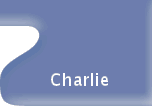

 |
|
 |
|
CHARLIE: The Bionic Pup (by Wendy Elliott) The Labrador Health website started as a dedication to Charlie, the Chocolate Labrador with severe Hip Dysplasia who has undergone bi-lateral hip replacements at the tender age of just 12 months. Therefore it's only right, that we tell you Charlie's story. We would like you to read it all, but if you can't, go to the last two sections Do NOT believe that this cannot happen to YOU, IT CAN. (The page can be navigated following the links below)
or (get the tissues ready!) View Charlie's Montage In November 2005 we decided as a family that the time was right to have a dog. We thought a Labrador would be the right dog for us. We were very naïve in our search for a dog (our previous dog was a lab x collie who had died 14 years previously aged 13 and who we had paid £10 for out of the local paper) We had no idea about any health checks which needed to be done on the sire and dam which responsible breeders have done before any matings take place (we have learnt a lot since last year!!!!) We bought a local ad magazine and looked for a Labrador pup. We were astounded at the price of the pups (ranging from £450 - £800) which we have since found out is in the normal price range for a well bred KC Registered Labrador whose parents have been health tested.
We then saw a litter of chocolate pups for £300 who were not KC registered – perfect for us!!!!!!!! We rang the number (a mobile) and asked about the pups. The lady told us that she hadn’t registered the pups as there were 10 in the litter and as it was expensive to do so (in fact it isn’t and only costs £12 per pup) she wanted to sell them cheaper so they could go for pets – again, perfect for us. We asked for an address but we were told that it didn’t have a proper address and to drive to the village she lived in and she would direct us from there. We did this and found the place – a large mobile home made into a small holding with quite a few animals but mainly horses as the lady’s daughter showed them.
The pups were smaller than I imagined. We were told they were a day off 6 weeks but were weaned and eating well so were fine for going. I asked to see the mum who was then brought in from outside. I could see she was a young dog and was told she was only 18 months (I’ve since found out that this is too young). We were told that the owner used her as a gundog on their land. I asked about the father and we were told that he was a friends chocolate lab who they had mated her with, in a nutshell, we were hooked and bought him.
When we picked him up after his x-rays we were shown the pictures and could instantly see that his hips were completely out of the socket. He was diagnosed with severe Hip Dysplasia. As he was then only 6 months, we were told to reduce walks but to try to build up the muscles up in his hips and to take him back to the vet in 3 months time to see if there was any improvement. Charlie then went on to have some hydrotherapy sessions and regular swims in the river. We took him back in July and it was obvious there was no improvement so we were referred to a specialist. We first saw the specialist in August who said that he could see how bad Charlie’s hips were and could tell that he was in a lot of pain. He arranged to do a full skeletal x-ray to check his maturity and also to check his elbows as a lot of dogs with HD also have elbow problems as well. Luckily this wasn’t the case with Charlie. We were told that without a hip replacement Charlie would be severely lame within a year and in tremendous pain with no hope of a decent future. Also the best time for a hip replacement is around 1 year. Charlie was booked in for his first op in September. We dropped him off on a Wednesday morning and told to ring at teatime. The operation had been a success although there had been a few problems with the equipment used for the op so it had taken longer than normal. We were able to pick him up the following day and bring him home. We were very shocked to see him as he had been shaved from his middle to half way down his tail, and half way down his legs. He also had a hobble on his back legs (a stiff bandage tying his back legs together to stop him from slipping and doing the splits, hence pulling the new hip out of the socket). He looked in a state of shock – very distressing to see. As he wasn’t able to go up or down steps, we made him a ramp to get him out of the door and into the garden for the toilet. Also for the first few nights we took it in turns to sleep downstairs with him to make sure he was ok. The hobble was to stay on for 3-4 weeks but as he was booked in for his 2nd op. at this time, he didn’t have it taken off. The 2nd op was late September. We dropped him off on a Friday morning and were told to ring at teatime again. When we rang this time, we were told there had been some complications. During the operation when the hip was being put in his pelvis crumbled. This than had to be rebuilt and the new hip cemented in place. We picked him up on Saturday and he looked really poorly. He wasn’t putting any weight on his leg whatsoever.
We took him back to the specialist who kept him again for yet more surgery. He opened him up to do a bowel operation and could then see that the cement from his hip operation was blocking the passage and needed shaving off a bit. He did this but his new hip then fell through the back of his pelvis. This hip could not then be fitted back in.
It arrived on Thursday and he was immediately operated on. All was looking ok until the specialist tried rotating his leg and the hip came out. This then had to be plated and screwed in place. We finally picked Charlie up the following Monday and luckily seemed so much better. He again had his hobble on (which he continually chewed off and had to have replaced). He was to have no exercise for 1 month and then return for more x-rays. The specialist was happy with his hips and Charlie was allowed 3 x 5 minute walks a day increasing by 2 minutes a day for a month building up to 3 x 30 minute walks a day. After another month he was allowed off lead walks on flat ground and then after that he could do what he likes (obviously gradually building him up). Charlie luckily has made a good recovery and although he has a funny gait when he runs (he kicks his legs out to the side) he isn’t in any pain anymore. The operations cost us £7,660 (£7,000 paid for by our insurance company) My main reason for telling Charlie’s story is to hope that anybody who re Please make sure that the sire and dam have both had all their health checks. Both parents should be hip scored - Both parents scores should be in the region of a total of 16. There will be instances when a dog with a score slightly higher than this may be used and ideally, you should be seeking a mate with a lower hip score to complement it. Both parents should also have current clear eye certificates - these certificates are done annually and identify a range of eye conditions that could affect the dog and its offspring. If either parent does not have a current certificate, then WALK AWAY. Nobody should be allowed to breed their dogs without these checks but unfortunately they do and so often the pups have terrible health problems. The specialist where Charlie had his surgery does 2 hip replacements every week and the majority of these are on Labradors.
Charlie is a much loved member of our family and we wouldn’t swap him for a healthy dog, but the last few months have been extremely traumatic for Charlie and for us as a family and I am really desperate to get the message across to as many people as possible about the importance of the health checks as I really wouldn’t want other dogs and families to go through the same as us.
|